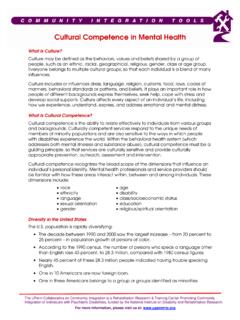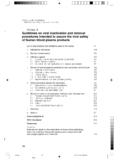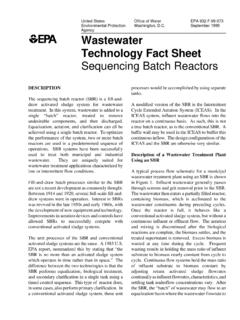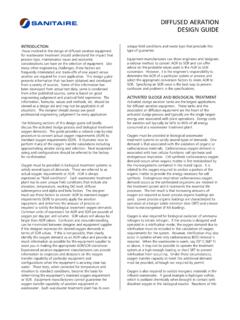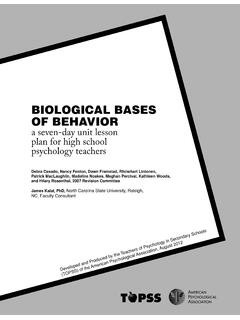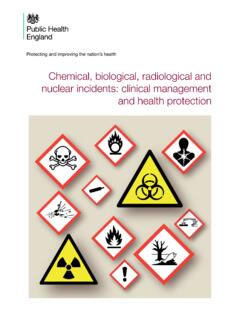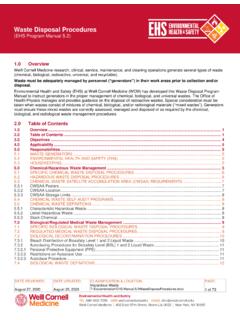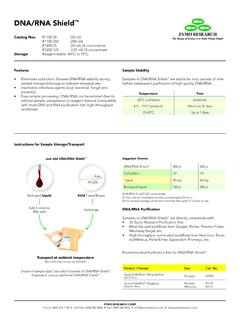Transcription of Removal from the Home: Resulting Trauma
1 Removal from the Home: Resulting Trauma It is vitally important to consider the physical and psychological safety of children living in foster care. Every year, 2 million children come into contact with the child welfare system due to investigations of parental abuse or neglect ( Department of Health and Human Services, 2004). Many of these children are removed from their homes and placed into the foster care system. Foster care is known to produce poor social outcomes, such as high delinquency rates, high teen birth rates, and lower earnings.
2 Furthermore, researchers have found that children on the verge of placement tend to have better outcomes when they are allowed to stay with their families; this is especially true for older children (Doyle, 2007). Foster care is meant to be a temporary solution, but children stay in foster care for an average of two years ( Department of Health and Human Services, 2005). In addition, the average foster child is moved from one home to another at least once, with 25 percent moving three or more times (Doyle, 2007). Although an abusive family would undoubtedly be harmful to children, removing a child from his or her family can be just as traumatic.
3 For example, placement instability in foster care could be a potentially serious problem for child development. Everyone would agree that children should not be exposed to abuse or neglect. However, the process of being removed from one s home and placed in foster care has consequences as well, and can have negative effects that last a lifetime (Bruskas, 2008). Such children are affected by a variety of factors, including; the psychological and neurobiological effects associated with disrupted attachment to biological parents, the specific traumatic experiences ( , The UPenn Collaborative on Community Integration is A Rehabilitation Research & Training Center Promoting Community Integration of Individuals with Psychiatric Disabilities, funded by the National Institute on Disability and Rehabilitation Research (NIDRR).)
4 For more information, please visit us at: neglect and/or abuse) that necessitated placement, the emotional disruption of placement, and the need to adjust to the foster care environment. (Isquith, Maerlender, Racusin, Sengupta, & Straus, 2005) The loss of a parent is arguably one of the most distressing experiences that a child can undergo. Losing a parent through state intervention can be especially harmful as it creates a divorce scenario in which children are removed from their family, friends, and environments with no sense of closure.
5 This can lead to an irreparable sense of loss that can stunt development and lead to behavioral problems (Silver et al., 1999). Few foster care systems have sufficient orientation programs to ease a child s transition into foster care. Children may then have problems adjusting, as the foster care system lacks explanations and assistance to help them understand why they were taken from their home and what their future holds. Lack of understanding of the foster care system and the process may lead to feelings of loss and/or rejection for children grappling to understand the separation from their biological families (Lawrence, Carlson, & Egeland, 2006).
6 Removal from the home and replacement in the home can lead to feelings of instability, loss of status and a loss of control as children may always expect and fear that they can be removed and replaced at any time without explanation (Schneider & Vivky, 2005). Children may worry how they will be seen and treated by peers and school personnel who find out that they are in foster care. Neva Pryor, director of volunteers and counseling services at the Interfaith Hospitality Network in Philadelphia and an expert in the area of Trauma -informed services, explains that when a child is taken away from a parent, the child is confused.
7 The child The UPenn Collaborative on Community Integration is A Rehabilitation Research & Training Center Promoting Community Integration of Individuals with Psychiatric Disabilities, funded by the National Institute on Disability and Rehabilitation Research (NIDRR). For more information, please visit us at: The UPenn Collaborative on Community Integration is A Rehabilitation Research & Training Center Promoting Community Integration of Individuals with Psychiatric Disabilities, funded by the National Institute on Disability and Rehabilitation Research (NIDRR).
8 For more information, please visit us at: might think that the parent is betraying him/her, especially if the child is not given an explanation that is clear, age-appropriate and Trauma -informed. Traumatic Removal and foster care experiences can create mistrust, which may lead to a range of psychological problems and personality disorders among these children, stemming from abandonment. The younger the child when s/he is removed from the family, the worse the situation. If the child is preverbal, the effect can be multiplied because s/he does not yet know how to express his/her feelings.
9 This may set the child up for a long-lasting sense of abandonment. Neva Pryor described a woman whose first memory is of being left on the porch of a foster home as her mother drove away (Pryor, 2009). Pryor explains that, even in the case of child abuse, the child attaches to the parents. Edie Mannion, a marriage and family therapist for over 25 years and the co-founder and director of the Training and Education Center (TEC), a program of the Mental Health Association of Southeastern Pennsylvania, is an expert on families affected by mental illnesses.
10 She agrees that, in comparable cases, it is better for children to stay with their families and have the families get appropriate supportive services, as this is far less traumatizing for the children and is more cost-effective. As one example of a traumatic effect, she describes how children of distressed parents can become parentified. That is, they become worried about the parent, and perhaps their siblings, the way a parent typically worries about the safety and well-being of a child. These children become little adults and worry that their parent or siblings might not survive without them further adding to the Trauma of being removed from the home.
